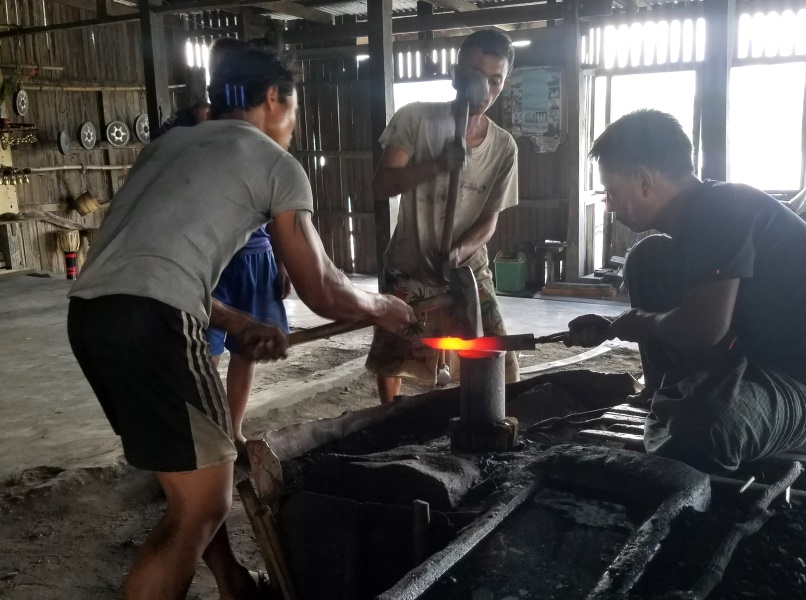Myanmar – Inle Lake
A one hour propeller plane flight delivered us to tiny Heho airport where we were met by Eie-Eie, our guide from the Pao tribe in Chan State. A young woman with a warm smile and silken long black hair, she was dressed in the traditional Myanmar style: An ankle length woven lunghi wrapped around her waist, topped by a colorful, patterned, silk blouse.
We drove through mountain passes, villages, and lush valleys to Inle Lake. Forty-five square miles in size, it has a population of 100,000 people living in villages built IN the lake.


At the simple wood-planked dock, our boat driver was awaiting our arrival in his sleek, teak, longboat. We settled into padded wooden armchairs, draped plastic ponchos around us and sped off to uncover the sights of Inle Lake.

One of the first sights to greet us was the fishermen of Inle Lake. Watching them in motion is like watching a ballet. They stand on one leg on the very front of their slender boats, wrap their other leg around the oar, and paddle while lowering and lifting their nets.


An hour into our ride, we drove through a massive flowering lily pond dotted with white egrets and drew up to the jetty of the Inle Lake Treasure Resort. Cottages built on stilts in the water have views of the mountains on one side, and huge expanses of pink, floating lotus gardens, and rice paddies, on the opposite side.


We spent our days on the lake traveling between the villages built in the water. Each one is unique and in each one families of artisans have practiced their craft for generations. It fascinated me to witness how they have uncovered the value of every plant, leaf and flower, every type of wood, every variety of soil, to enable them to produce the items which have sustained their livelihood for generations. Everything is made using age-old manual skills.


We would travel into a village along narrow canals and stop to watch weaving, boat making, cigar making, blacksmiths creating tools and ornamental objects, silversmiths, and fruit and vegetable farming in the floating gardens.



We explored the early morning market where villagers in their tribal dress arrive before dawn to set up their stalls, tea shops, and makeshift barber shops.



The Phaung Daw Oo Pagoda, with its five golden Buddhas, is located in front of the marketplace. It receives a constant flow of worshippers who come to pay their respects and to add layer upon layer of gold leaf to the rotund Buddhas.Such a large amount of gold leaf has been applied, that one can no longer make out their features nor their body shape.


We visited the ‘long-necked’ (Karan tribe) who wrap bronze coils around their necks starting at age six. They start off wearing two or three coils and keep adding more as they age. The women who we met wore between fifteen and twenty-five coils. They rarely remove them.


We trekked through forests of bamboo where we came across a wedding ceremony in progress and children frolicking in the narrow river practicing their backward somersaults.

The trail delivered us to a forest of 1,054 stupas/pagodas, built during the reign of King Alaungsithou during the 12th Century. A magnificent sight under the dark, threatening storm clouds, punctuated by beams of golden sunshine.

Inle Lake truly is one of the treasures of Myanmar.
Highly Recommend : GULF TRAVELS AND TOURS
Tour Operation Manager : Mr.Kaung Si Thu
email : gtt.touroperationmanager@gmail.com
